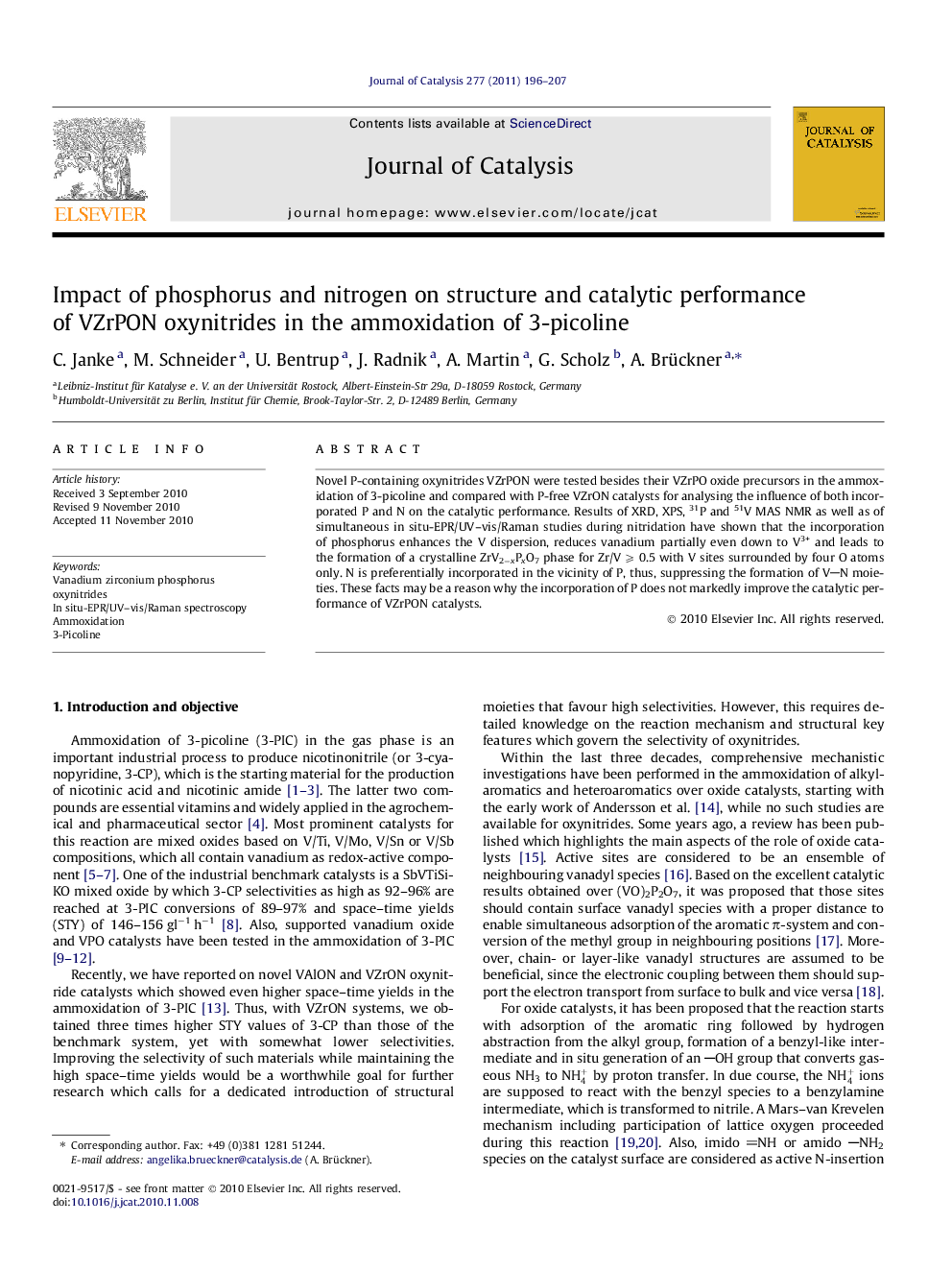| Article ID | Journal | Published Year | Pages | File Type |
|---|---|---|---|---|
| 61746 | Journal of Catalysis | 2011 | 12 Pages |
Novel P-containing oxynitrides VZrPON were tested besides their VZrPO oxide precursors in the ammoxidation of 3-picoline and compared with P-free VZrON catalysts for analysing the influence of both incorporated P and N on the catalytic performance. Results of XRD, XPS, 31P and 51V MAS NMR as well as of simultaneous in situ-EPR/UV–vis/Raman studies during nitridation have shown that the incorporation of phosphorus enhances the V dispersion, reduces vanadium partially even down to V3+ and leads to the formation of a crystalline ZrV2−xPxO7 phase for Zr/V ⩾ 0.5 with V sites surrounded by four O atoms only. N is preferentially incorporated in the vicinity of P, thus, suppressing the formation of VN moieties. These facts may be a reason why the incorporation of P does not markedly improve the catalytic performance of VZrPON catalysts.
Graphical abstractThe catalytic performance of VZrON and novel P-containing VZrPON oxynitrides is compared in the ammoxidation of 3-picoline. Due to higher VOx dispersion, lower V valence state and a pronounced formation of PN instead of VN bonds VZrPON catalysts are less active but slightly more selective.Figure optionsDownload full-size imageDownload high-quality image (78 K)Download as PowerPoint slideResearch highlights► P incorporation raises V dispersion, forms PN and suppresses VN moieties. ► P lowers activity and improves selectivity only slightly. ► 3-CP selectivity rises with rising N surface concentration. ► Impact of N surface sites on selectivity dominates over surface acidity.
